
 Neko Senpai
Neko Senpai About FOB and FCA
Explained FOB and FCA by video
 Kamome Senpai
Kamome Senpai This is 4:47 video.
Description of FOB (Free on Board)
This time, let’s have a look at FOB from an exporter’s and an importer’s point.
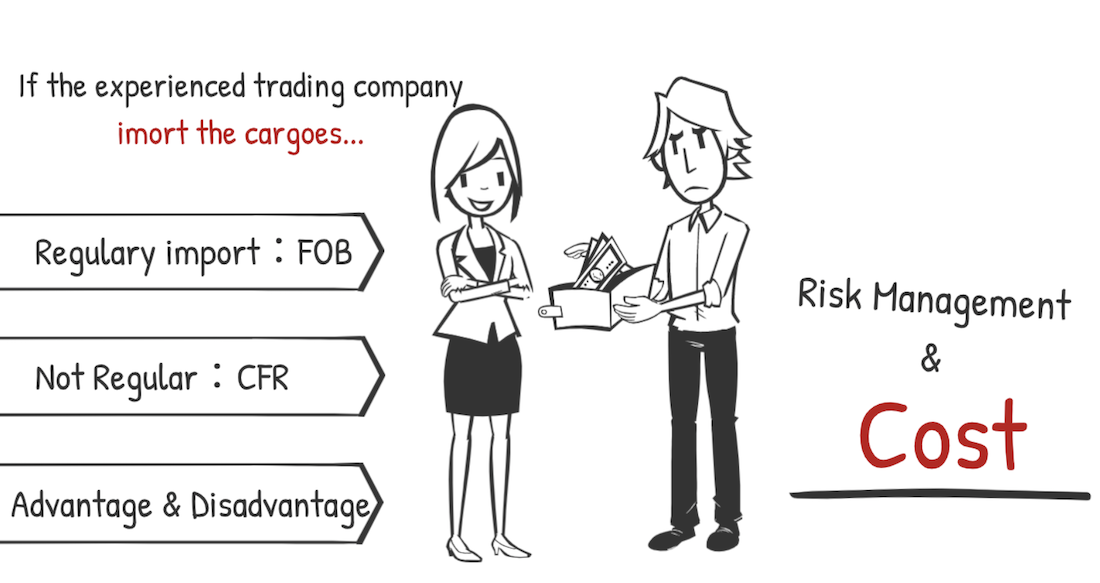
Risk management and cost, are keys for the trade business.
For example, if we, an experienced trading company are importing, we will use FOB for countries which have regular trade business arrangements.
CFR is used by countries who do not have a regular trade business arrangement.It is very important to understand the meanings and the use of these two trading terms based on your business experience.
Now, we will talk about advantages and disadvantages of FOB.

Firstly, let’s look at the term of FOB.
FOB is a trading condition of cost and risk responsibilities that change from one side to the other, once the cargo is the deck of the vessel at the exporting port.
FOB is a short form of “Free On Board”,and the “board” in this instance refers the vessel deck.
FOB means once the cargoes are on the deck of the vessel, the exporters become free from responsibility and the responsibility moves to the importers.
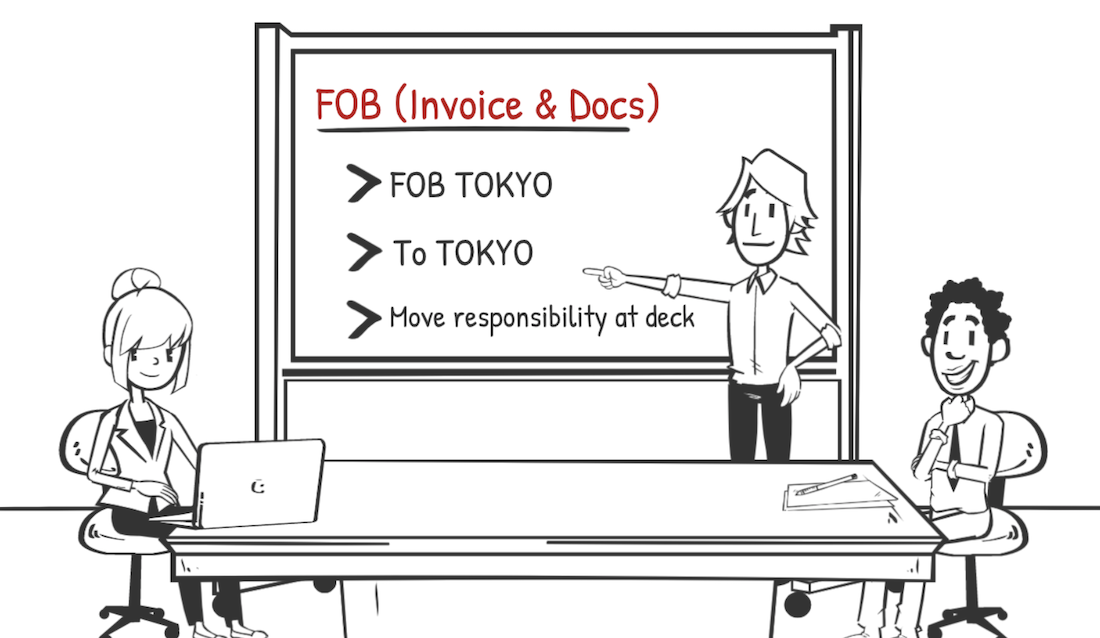
The name of the exporting port is displayed after FOB on an invoice.
For example, “FOB TOKYO”.
“FOB TOKYO” means, once the cargo exported to Tokyo is on the deck of the vessel at the exporting port, the responsibility will move from exporters to importers.
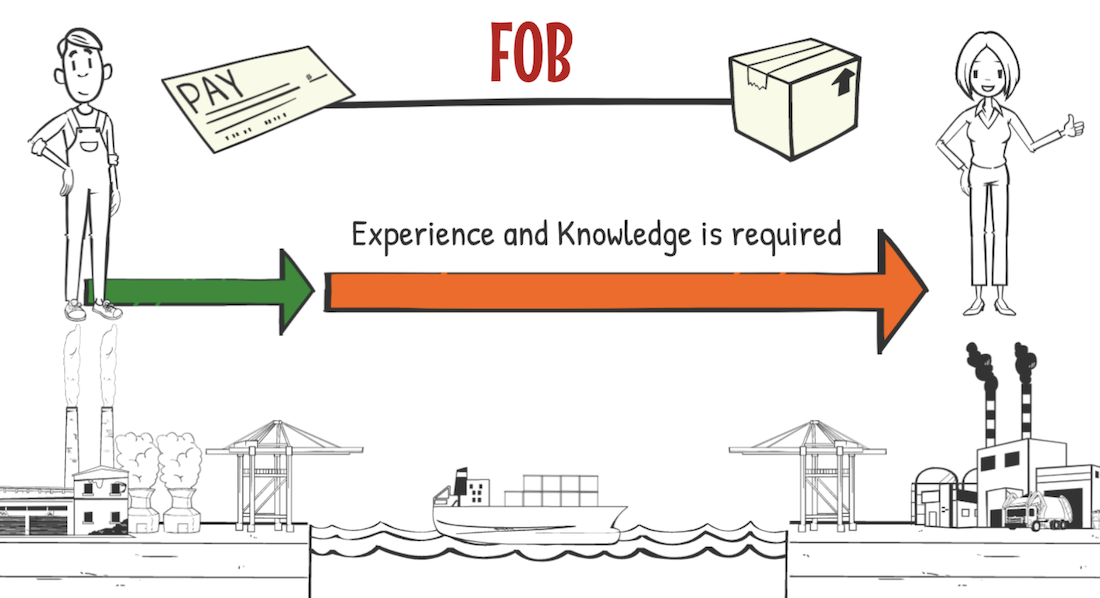
As responsibility moves from exporters to importers, the risk to exporters is reduced.
However, it is still less responsibility for importers than EX-works.FOB requires a certain level of business experience and knowledge of risk hedge method.
Exporter’s point of view in FOB

Let’s look at FOB from an exporter’ point of view.
Logistics arrangements that are required for FOB, exporters are arrangement of domestic trucks and customs clearance.
For exporter’s point of view, FOB is a lighter business condition, with reduced responsibility, requiring exporters to take the responsibility up to and including the exporting port.
From this point, the shipping arrangement is entrusted to the importers.
Importer’s point of view in FOB
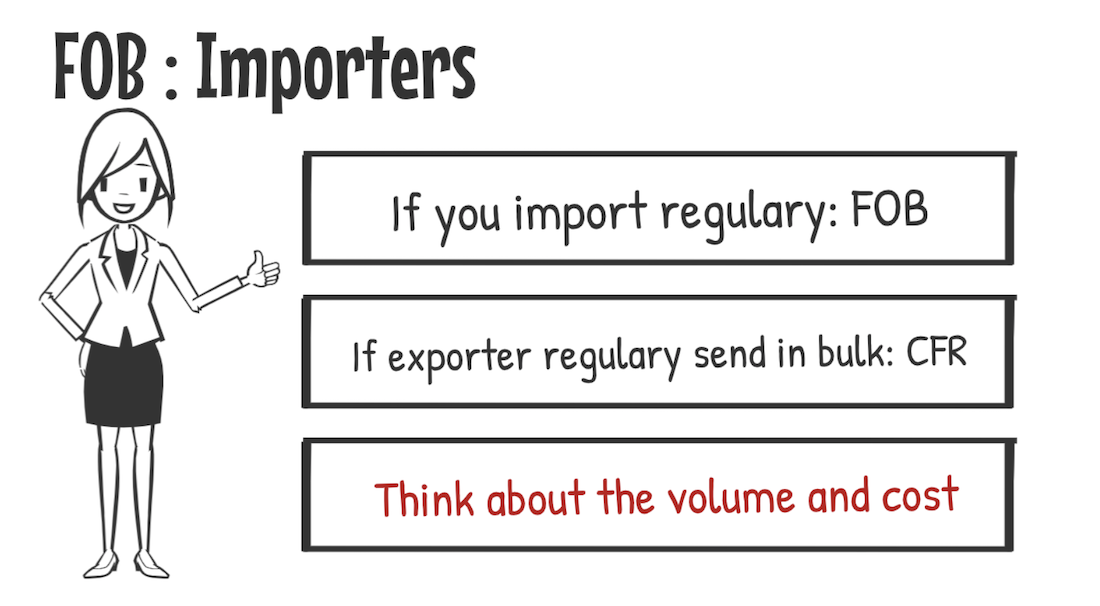
Now, let’s look at FOB from an importer’s point of view. If you are importing cargoes regularly from a specific importing country, you can take advantage by using FOB.
As this will enable you to negotiate sea freight cost reduction with a freight forwarder.If you operate a business with a company that export cargoes in bulk, it is better to use CFR than FOB.
An experienced person who deals with high volumes is more cost effective, and they will be able to make an arrangement smoothly.
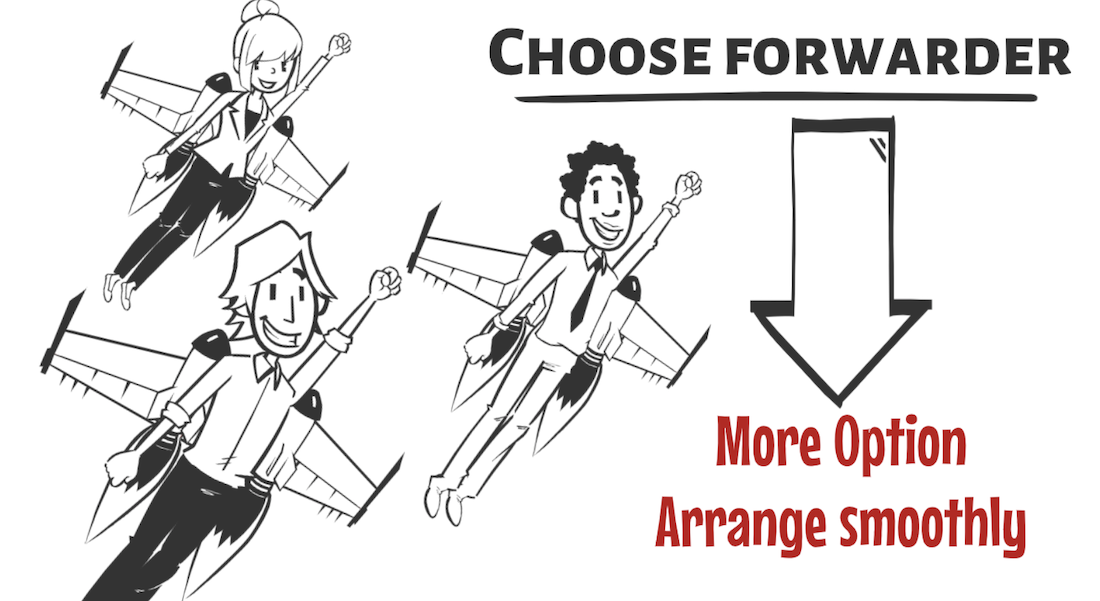
You also need to confirm that the freight forwarder you choose to deal with, has strength and experience in logistics from exporting countries.
As previously explained a freight forwarder who imports from specific countries, will have more options and can make an arrangement smoothly.
Otherwise, you will need to consider changing the freight forwarder, or negotiating alternative trade terms.
Advantage and Disadvantage

For example, our company regularly imports cargoes from Japan and China to Thailand, so we have some business advantages.
However, since we do not regularly import from Africa and South America, the cost is higher and we are unfamiliar with their business practices.In this case, we offer our customer CFR, rather than FOB to increase exporter’s benefit.
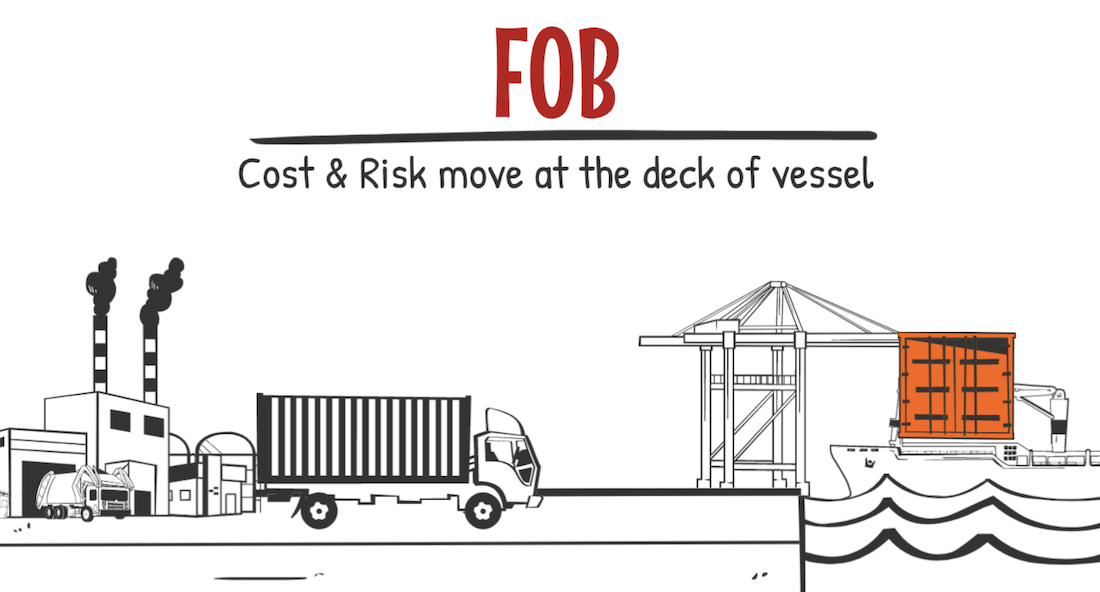
Feature of FCA
Now let’s look at “FCA” which you should remember with “FOB”.As explained, with FOB, cost and risk responsibilities move from sellers to buyers once the cargoes are on the deck of the vessel.
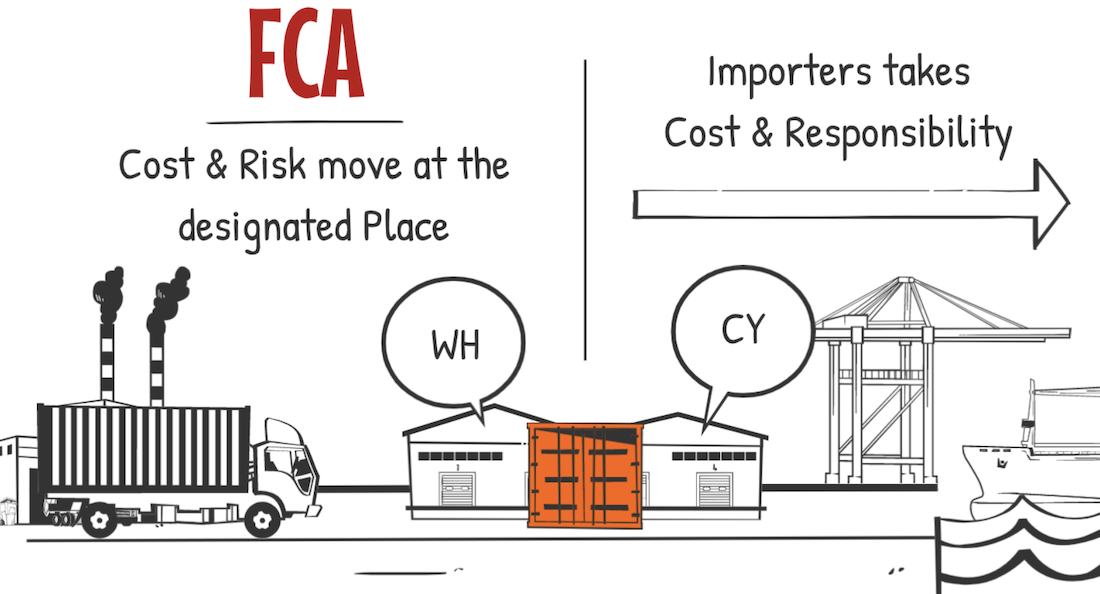
With FCA, cost and risk responsibilities move from sellers to buyers at designated place, before cargos are on the deck of the vessel, it could be CY or appointed warehouse.
The benefits of FCA are that it has less risk responsibilities at the port, compared to FOB.
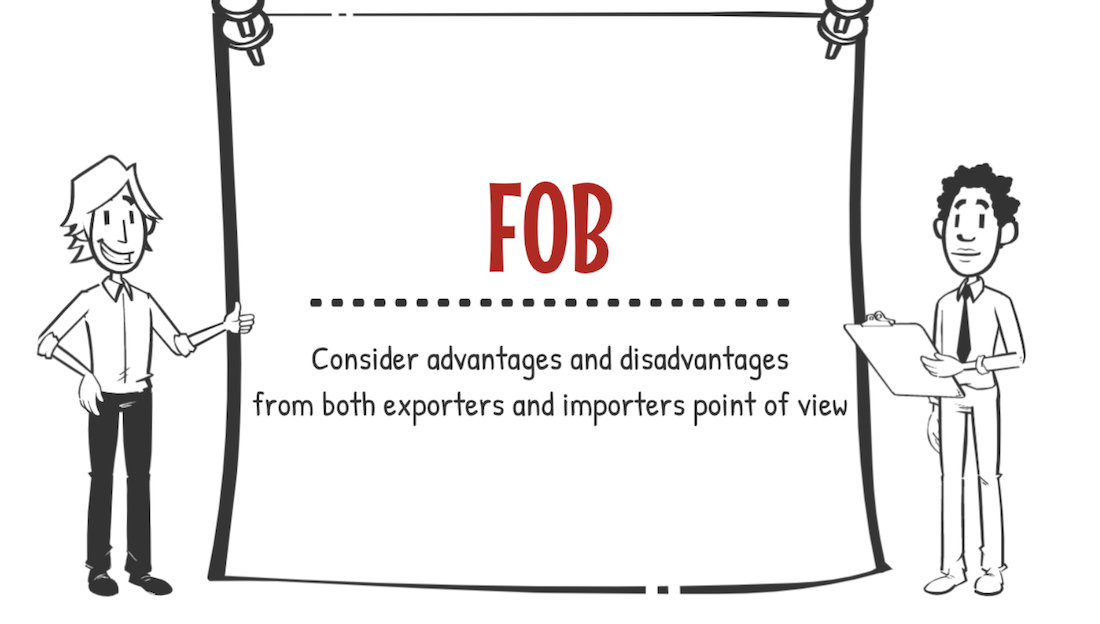
We checked FOB today. FOB, the responsibility move from an exporter’s to importer’s once the cargoes are on the deck of the vessel of exporting port.
It is important for both exporters and importers to understand FOB when requesting quotes and business.
When using FOB trade, you should consider advantages and disadvantages of the terms before contracting out.
Contact to IINO san

★Contact to IINO san★
—————————————–
FaceBook Page
https://www.facebook.com/iinosaan
Linked In Message
https://www.linkedin.com/in/shinya-iino/
Twitter DM
https://twitter.com/iino_saan
—————————————–
 IINO
IINO I’m waiting for your contact!










